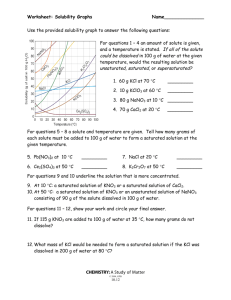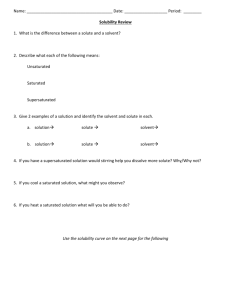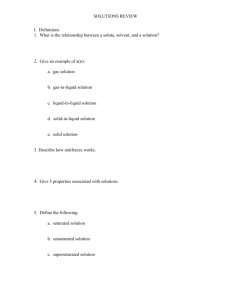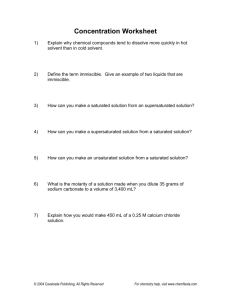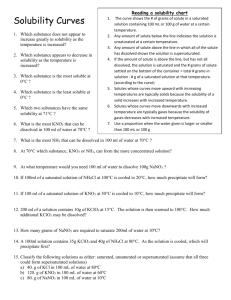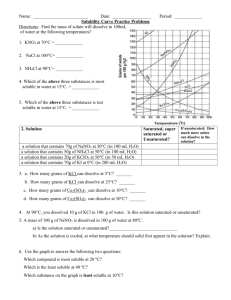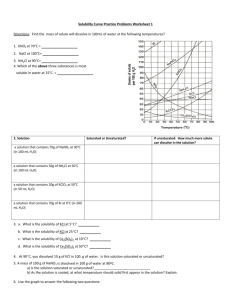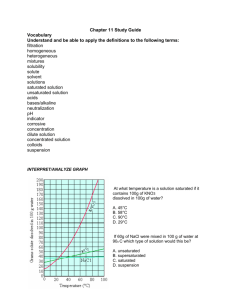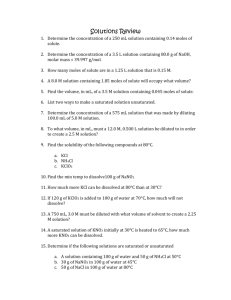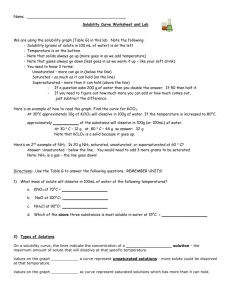Worksheet: Solubility Graphs Name______________ CHEMISTRY
advertisement
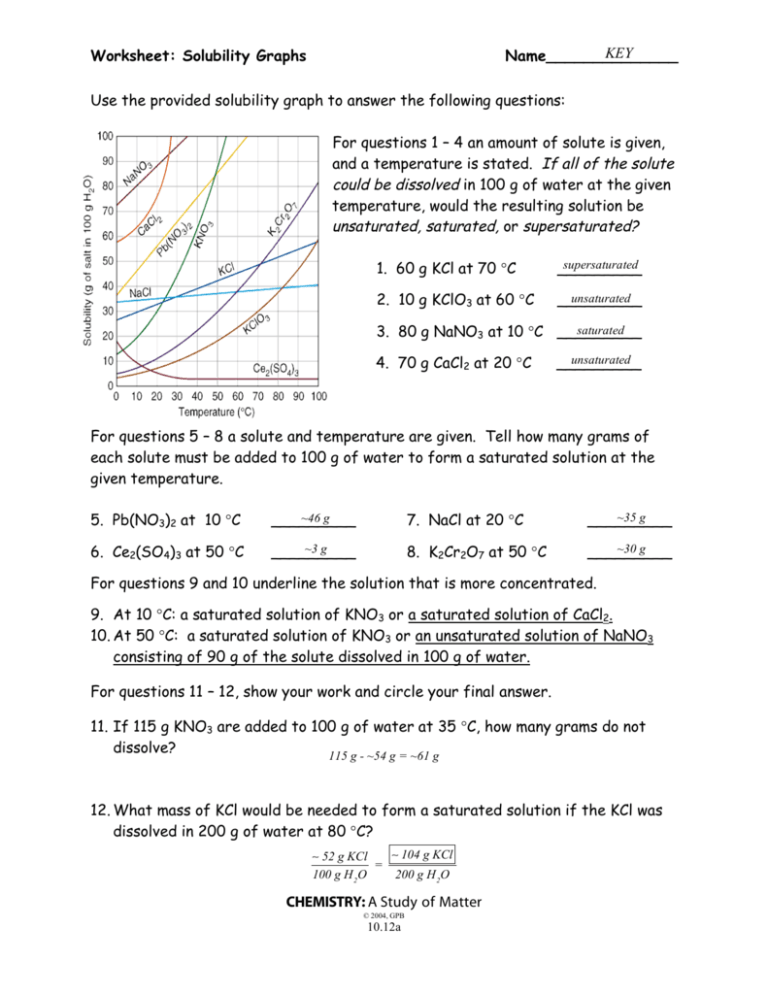
KEY Name______________ Worksheet: Solubility Graphs Use the provided solubility graph to answer the following questions: For questions 1 – 4 an amount of solute is given, and a temperature is stated. If all of the solute could be dissolved in 100 g of water at the given temperature, would the resulting solution be unsaturated, saturated, or supersaturated? 1. 60 g KCl at 70 °C supersaturated _________ 2. 10 g KClO3 at 60 °C unsaturated _________ saturated 3. 80 g NaNO3 at 10 °C _________ 4. 70 g CaCl2 at 20 °C unsaturated _________ For questions 5 – 8 a solute and temperature are given. Tell how many grams of each solute must be added to 100 g of water to form a saturated solution at the given temperature. 5. Pb(NO3)2 at 10 °C ~46 g _________ 7. NaCl at 20 °C ~35 g _________ 6. Ce2(SO4)3 at 50 °C ~3 g _________ 8. K2Cr2O7 at 50 °C ~30 g _________ For questions 9 and 10 underline the solution that is more concentrated. 9. At 10 °C: a saturated solution of KNO3 or a saturated solution of CaCl2. 10. At 50 °C: a saturated solution of KNO3 or an unsaturated solution of NaNO3 consisting of 90 g of the solute dissolved in 100 g of water. For questions 11 – 12, show your work and circle your final answer. 11. If 115 g KNO3 are added to 100 g of water at 35 °C, how many grams do not dissolve? 115 g - ~54 g = ~61 g 12. What mass of KCl would be needed to form a saturated solution if the KCl was dissolved in 200 g of water at 80 °C? ! 104 g KCl ! 52 g KCl = 100 g H 2 O 200 g H 2 O CHEMISTRY: A Study of Matter © 2004, GPB 10.12a
